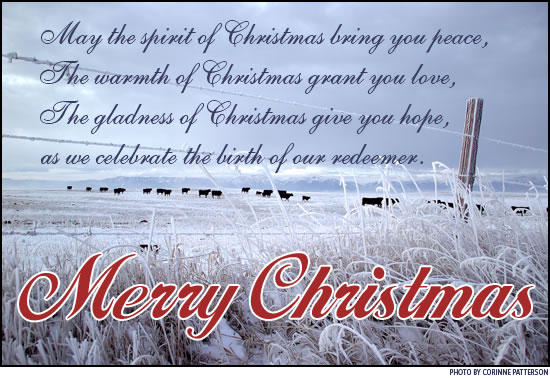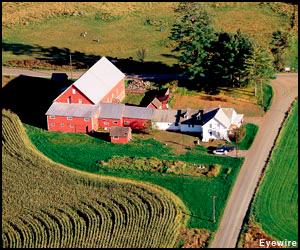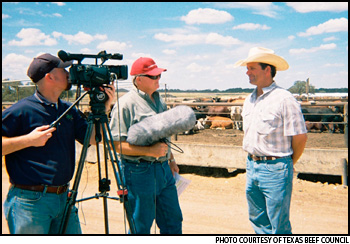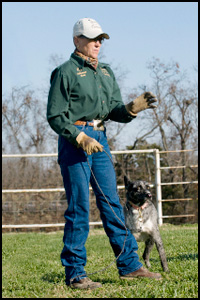
Range Beef Cow Symposium XXI
Wyoming hosts premiere beef cattle symposium.
![]() Seven hundred cattlemen were on hand Dec. 1-3, 2009, at the Casper Events Center in Casper, Wyo., for Range Beef Cow Symposium XXI. Hosted by the Cooperative Extension Service and animal science departments at four universities — the University of Wyoming, the University of Nebraska, South Dakota State University and Colorado State University, the biennial symposium offered real-world, workable solutions on subjects of nutrition, marketing, health, reproduction, consumer demand and industry issues.
Seven hundred cattlemen were on hand Dec. 1-3, 2009, at the Casper Events Center in Casper, Wyo., for Range Beef Cow Symposium XXI. Hosted by the Cooperative Extension Service and animal science departments at four universities — the University of Wyoming, the University of Nebraska, South Dakota State University and Colorado State University, the biennial symposium offered real-world, workable solutions on subjects of nutrition, marketing, health, reproduction, consumer demand and industry issues.
Online coverage of Range Beef Cow Symposium XXI is available in the newsroom at www.rangebeefcow.com. Posted to the web site are synopses of the presentations, as well as PowerPoints, proceedings, and supporting materials as provided by the speakers. While not yet posted at press time, audio files will be added as well.
The University of Nebraska will make available for ordering video coverage of each session. Each presentation is on its own DVD. Cost is $10 for the first DVD and $5 for subsequent DVDs. To request information on ordering, call 402-472-3035.
We have a few of the presentations scattered throughout this EXTRA. For all coverage, visit the newsroom at www.rangebeefcow.com.
Association Releases Updated EPDs
The American Angus Association's Spring 2010 Sire Evaluation Report and updated National Cattle Evaluation (NCE) are now available online at www.angus.org. The report also includes updated research reports for heifer pregnancy and docility.
Accessing the Sire Evaluation Report online is the fastest and easiest way to get the latest performance information on sires in the Angus breed. It allows you to specify ranges of expected progeny difference (EPD) values and to sort bulls that qualify within those ranges. The evaluation also includes dollar value indexes ($Values), expressed in dollars per head, to assist commercial beef producers in selection decisions.
The Spring 2010 Sire Evaluation Report lists data on 2,190 sires from a total of 202,048 sires in the Association database. The Young Sire Supplement also included in the report lists 2,417 bulls.
Printed copies will be available by request. Active members who returned their blue request cards to receive a printed copy of the fall 2009 report will receive the spring 2010 report automatically. All other members and commercial producers who want a printed report must request it by contacting Brenda Gabriel at 816-383-5144.
For more information regarding EPDs, the NCE or performance evaluation, visit www.angus.org.
New-generation Carcass EPDs
Fall 2009 welcomed in a new generation of carcass EPDs that combine all that we know on an Angus animal's end-product potential at the American Angus Association. Carcass genetic predictions are better than ever before in characterizing Angus cattle for carcass marbling, as well as ribeye, fat and carcass weight. With the advent of genomic profile information, expected progeny differences (EPDs) can be generated on animals at any time during their lifetime in concert with all available pedigree and performance information for the traits. Read more.
 Changing the Definition of a 'Farm'
Can Affect Federal Funding
Changing the Definition of a 'Farm'
Can Affect Federal Funding
The U.S. Department of Agriculture (USDA) defines "farm" broadly as any operation with the potential to produce at least $1,000 worth of agricultural goods in a given year. Based on 2006 prices, an operation could be considered a farm for growing 4 acres of corn, a tenth of an acre of berries or for owning one milk cow. Consequently, most U.S. establishments classified as a farm produce very little, while most agricultural production occurs on a small number of much larger operations.
The definition of a farm affects farm statistics and influences the design and delivery of federal farm programs. The definition also has implications for states because each state's share of the national farm population is used to help allocate some federal funding. Read more.
What’s Inside …
The December Angus Beef Bulletin EXTRA features several valuable articles, including specific sections devoted to management, marketing, and health and nutrition information. Select from the tabs at the top of the page to access this month’s entire information-packed edition, a portion of which includes the following:
• Ag Producers Should Do Income Tax Planning
• Favorable Feeding Conditions Favor Beef Quality
• Use Caution When Grazing Cornstalks, Feeding Baled Cornstalks
• Cut Winter Feed Costs by Culling Cow Herd
• Recognize Septicemia in Calves
• Factors Affecting Consumer Demand
• Evaluate Retained Ownership Alternatives
• Changing the Definition of a 'Farm' Can Affect Federal Funding
News Briefs …
• NCBA Task Force Recommends Major Structure Change
• Biden Kicks Off $7.2 Billion Recovery Act Broadband Program
• USDA/DOJ Seek Comment, Hold Public Workshops on Competition in Agriculture
• APHIS to Update Brucellosis, TB Programs
• Nonambulatory Livestock Regulation
• Missouri Sets Two-year Precipitation Record
• USDA to Launch Pilot Study to Increase Availability of Locally Grown Foods
Putting a Face on the Beef Industry

While filming “The Texas Beef Story: A Family Business,” Jason Peeler, owner of Texana Feeders, explains the day-to-day tasks that take place in caring for cattle at his feedyard located in Floresville, TX.
.In efforts to continue proactive outreach, the Texas Beef Council (TBC) teamed up with the Texas Farm Bureau to develop a video utilizing beef farmers and ranchers to tell the beef production story. The goal of the video is to educate consumers about the beef industry in order to dispel myths about modern beef production practices related specifically to animal welfare, the environment, nutrition and food safety.
"The Texas Farm Bureau is pleased to partner with the Texas Beef Council to tell the stories of the families involved in Texas beef production," said Gene Hall, Texas Farm Bureau public relations director. "Their commitment to the land and their heritage, both passed down from preceding generations, is truly inspiring."
Interviews were conducted with three beef industry families focusing on the dedication and commitment of beef producers. The video takes consumers on a virtual journey, visiting the R.A. Brown Ranch, Texana Feeders and Star Ridge Land and Cattle Co.
"TBC was fortunate enough to work with Texas Farm Bureau to produce a first-rate video that will lend itself to multiple uses within the Texas beef industry," said Richard Wortham, TBC executive vice president. "The video will help put a face on our industry and allow consumers to better understand the hard work and dedication cattle producers put in each and every day to supply not only the U.S., but the world, with a safe and wholesome product."
The video is featured on www.TexasBeef.org in a new section titled "The Beef Story." It will also be utilized at various TBC events and seminars. Cattle organizations and beef industry groups are encouraged to utilize the video in their efforts to combat animal agriculture activists and explain the beef production process.
For more information on this and other checkoff-funded programs, visit www.TexasBeef.org or call 1-800-846-4113.
RBCS XXI:
Cattlemen Urged to Stay Watchful
of Pending Legislation.
Federal estate tax, cap-and-trade and health care reform were among the touchy subjects addressed by Wyoming Congresswoman Cynthia Lummis during the opening session of the 2009 Range Beef Cow Symposium in Casper, Wyo., Dec. 1-3. Speaking to her audience via computer link from Washington, D.C., Lummis advised beef cattle producers to remain watchful and wary of those legislative issues and others likely to affect their businesses. Read more.
Side Notes
Cowdog enthusiasts gather for Cowdog Days ’09.

Tammy Goldammer-Stuart works Bandit — a son of Bert, the foundation of her Hangin' Tree Cowdog program — during a training session at Cowdog Days '09.
Hangin' Tree Cowdog enthusiasts gathered Nov. 6-8 at Tammy's Cowdogs near Lohman, Mo., for a weekend filled with working cattle dogs. "Cowdog Days '09" kicked off with a production sale followed by two days of cowdog and handler schooling. The three-day event was hosted by Tammy Goldammer-Stuart.
The production sale featured trained cowdogs and a litter of 6-month-old pups. The started dogs were demonstrated by working independently to gather cows, yearlings and weaning heifers from drylot pens. The pups, along with their sire and dam gathered 30 weanling heifers from one lot and brought the calves to the working corrals.
Read more.
[Click here to go to the top of the page.]







